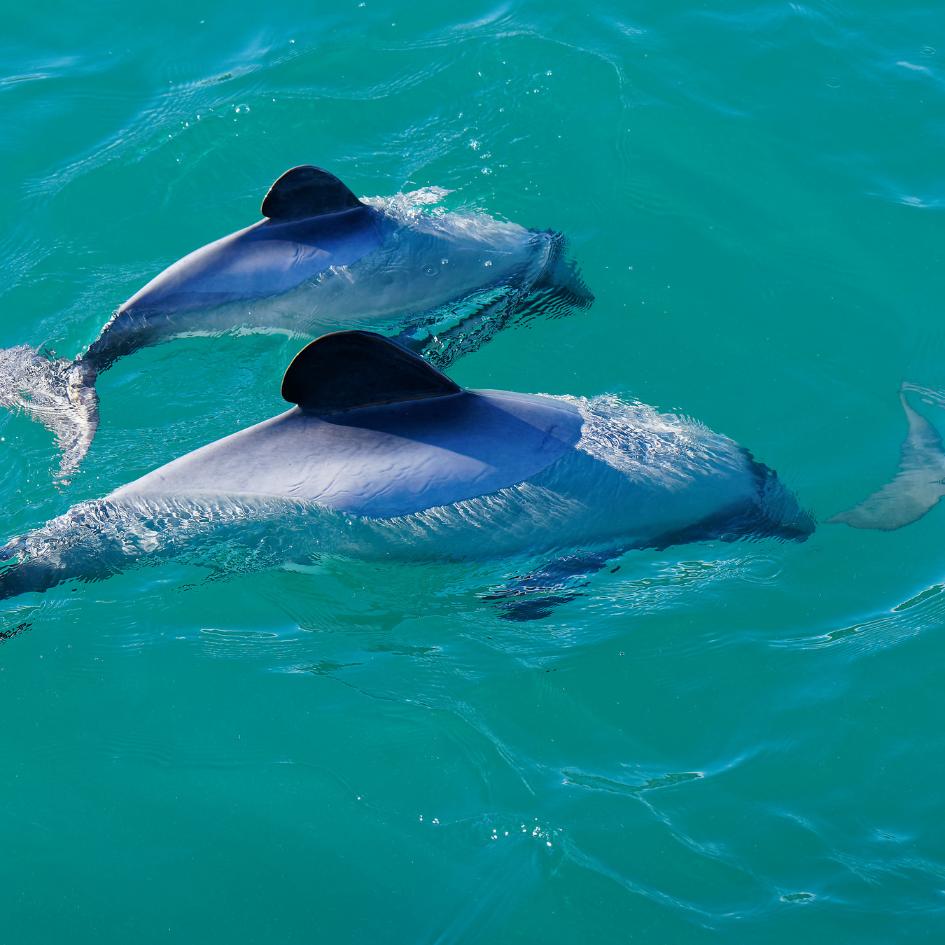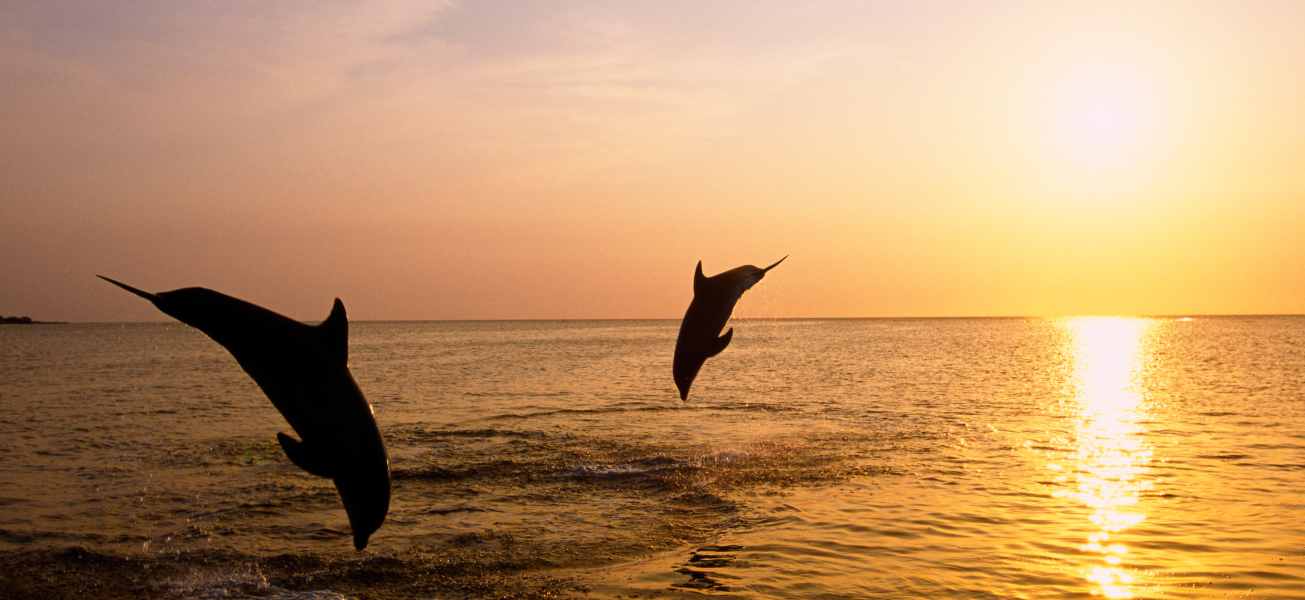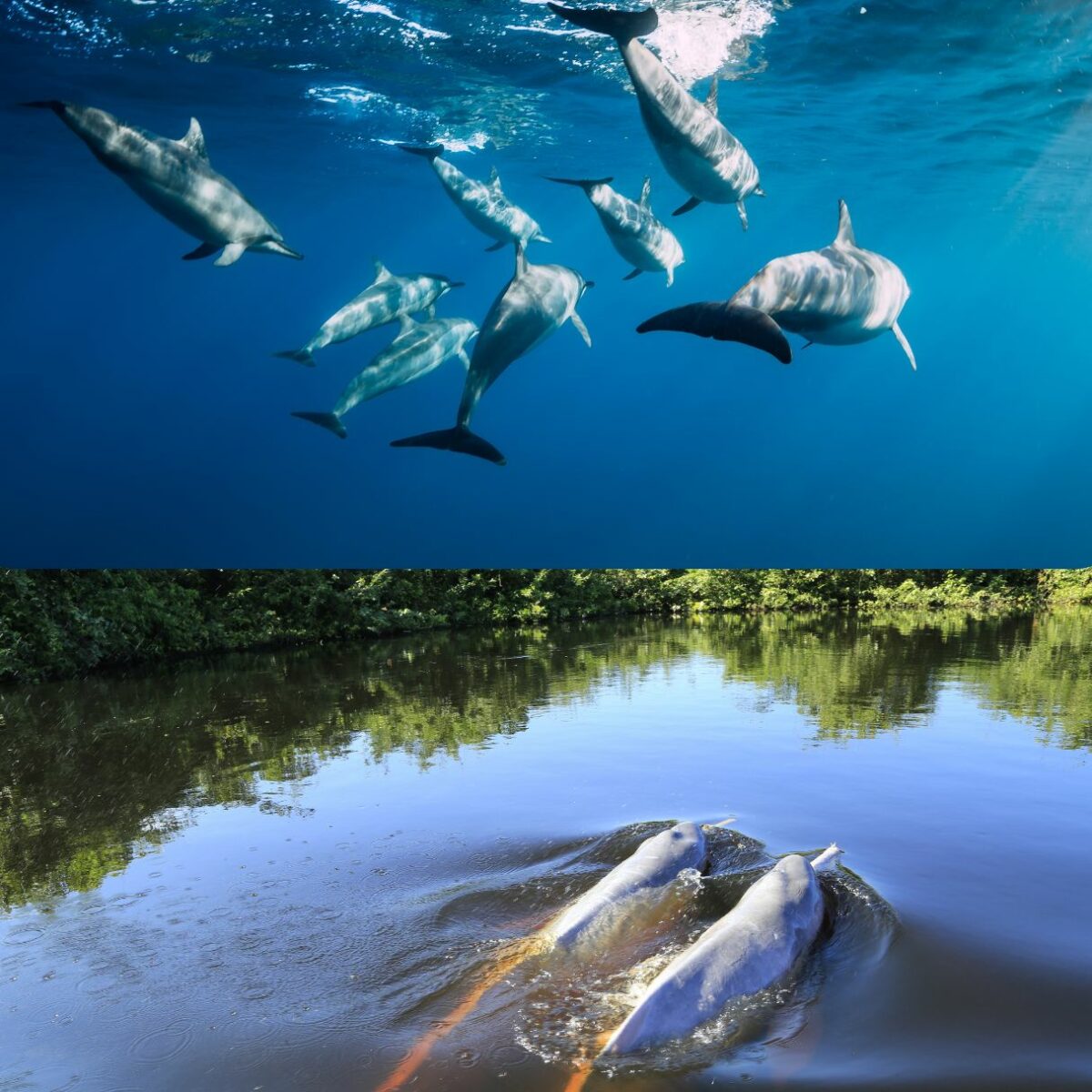There are nearly 40 different types of dolphins swimming around in our world. And here’s a fun fact: 6 types are often referred to as whales, including orcas and pilot whales. [1]
Dive into a world of wonder with our collection of jaw-dropping dolphin facts! From their incredible intelligence to their tight-knit social circles, these magnificent marine mammals are more fascinating than you ever imagined. Get ready to make a splash as we unveil 20 astonishing tidbits that will leave you saying, “I never knew that about dolphins!”
Dive into the following incredible dolphin facts
1. How many types of dolphins are there?
2. Where do dolphins live?
3. Why are dolphins referred to as cetaceans?
4. How fast can dolphins swim?
5. How do dolphins communicate?
6. How do dolphins breathe?
7. Why do dolphins blow bubbles?
8. How smart are dolphins?
9. Why do dolphins play?
10. Are dolphins self aware?
11. What do dolphins eat?
12. How do dolphins hunt?
13. How do dolphins eat?
14. Do dolphins sleep?
15. Why do dolphins live in pods?
16. How do dolphins raise their young?
17. Are any dolphin species endangered?
18. What are the biggest threats to dolphins?
19. What is the largest dolphin?
20. What is the smallest dolphin?
1. How many types of dolphin are there?
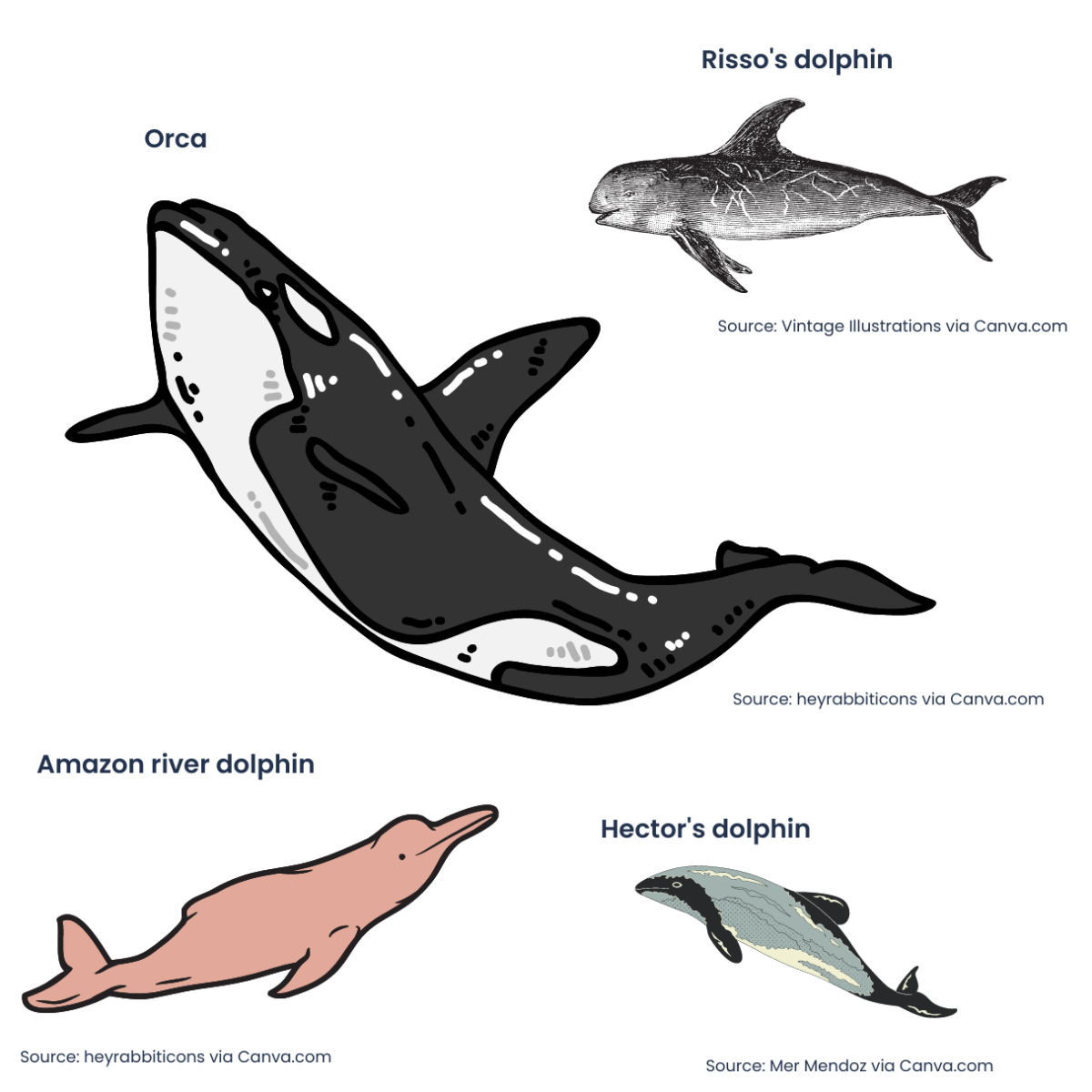
3. Why are dolphins referred to as cetaceans?
The term “cetacean” might sound mysterious, but it’s actually the umbrella term that brings dolphins, whales, and porpoises into one big, aquatic family. But why are dolphins part of this exclusive club?
Well, all cetaceans share a few hallmark features: a streamlined body built for slicing through water, a layer of insulating blubber, and, of course, that iconic blowhole on top of their heads for quick surface breaths. Dolphins, with their playful demeanour and high intelligence, perfectly embody these traits, which is why they’ve earned their cetacean title. So, the next time you hear “cetacean,” think of it as the VIP pass that dolphins, whales, and porpoises carry to the marine world’s most exclusive gatherings!
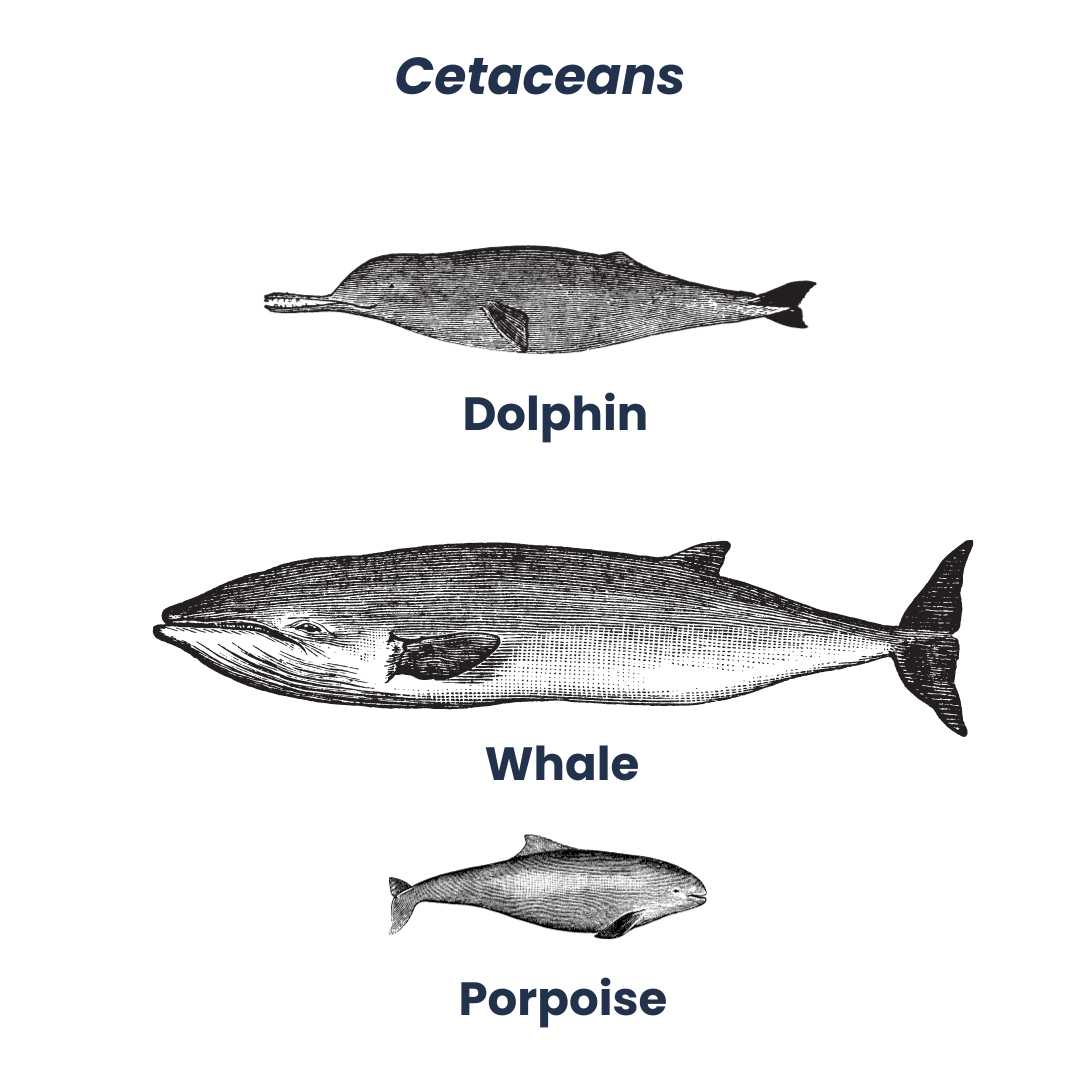
4. How fast can dolphins swim?
While dolphins often don’t speed unless they need to, they reach speeds of up to 32 to 60 kilometres per hour (that’s 20 to 37 miles per hour).
If you’re wondering how they achieve such amazing speeds, look no further than their streamlined bodies and powerful tails. With a few flicks of their flukes, they can zoom through the water with breathtaking agility. Their layer of blubber also provides buoyancy and helps them swim adeptly.
And have you ever seen a bubble curtain around a swimming dolphin? That curtain reduces the drag on dolphins’ bodies, and helps them speed along. [4]
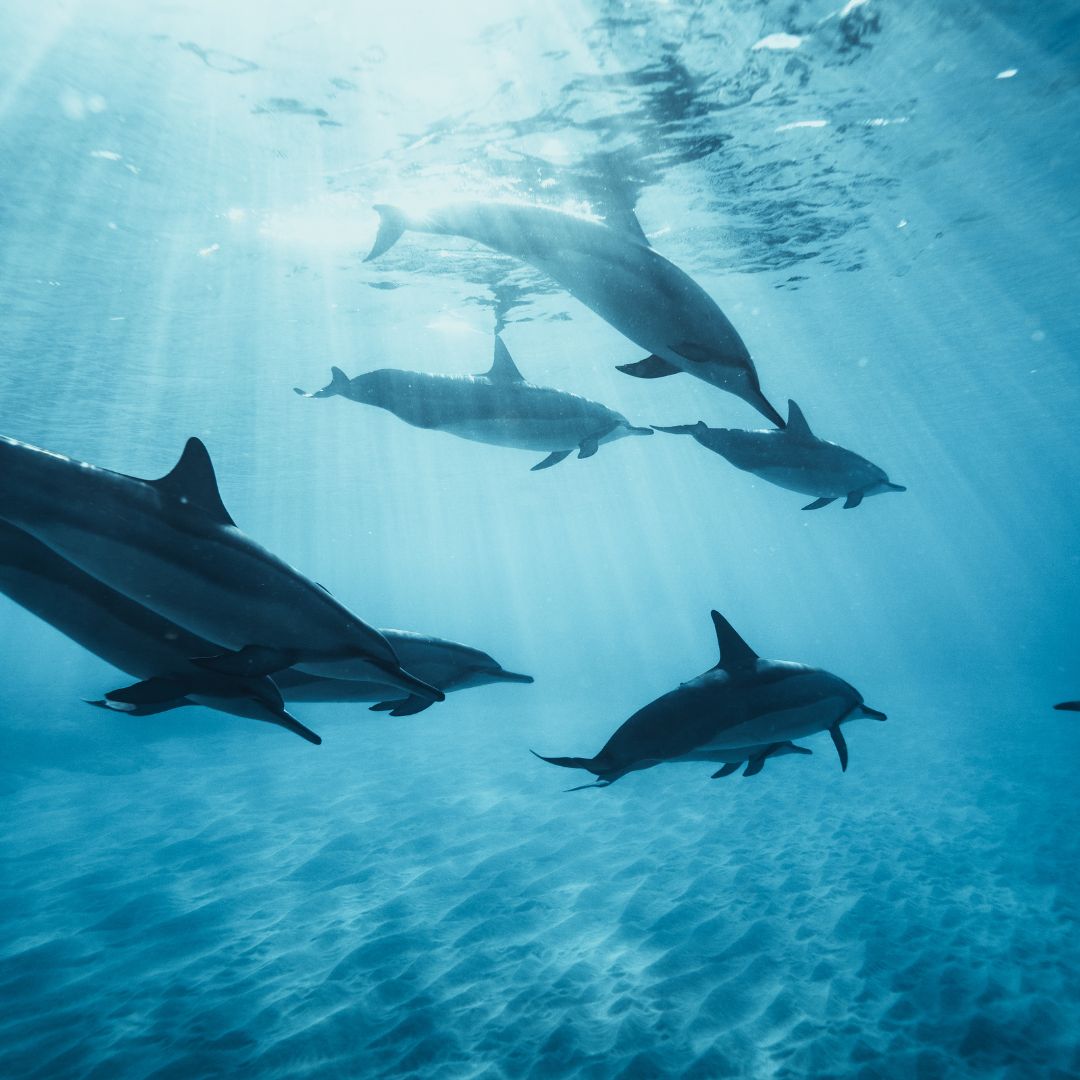
5. How do dolphins communicate?
Dolphins have an extraordinary ability to communicate with each other, and they do so through a fascinating blend of sounds, body language, and even touch. Let’s dive into their communication techniques.
- Echolocation: Dolphins emit high-pitched clicks and listen for the echoes to gauge distance and identify objects around them.
- Whistles and clicks: Distinctive whistle patterns help dolphins recognise each other, much like human names. A series of clicks are often used to signify alarm or excitement.
- Body language: Dolphins communicate through physical gestures, like slapping their tails on the water’s surface to signal danger or attract attention. Leaping and belly flops can signify joy or playfulness.
- Touch: Physical touch is also an important aspect of dolphins’ communication. Dolphins nuzzle and pat each other, usually to strengthen social bonds.
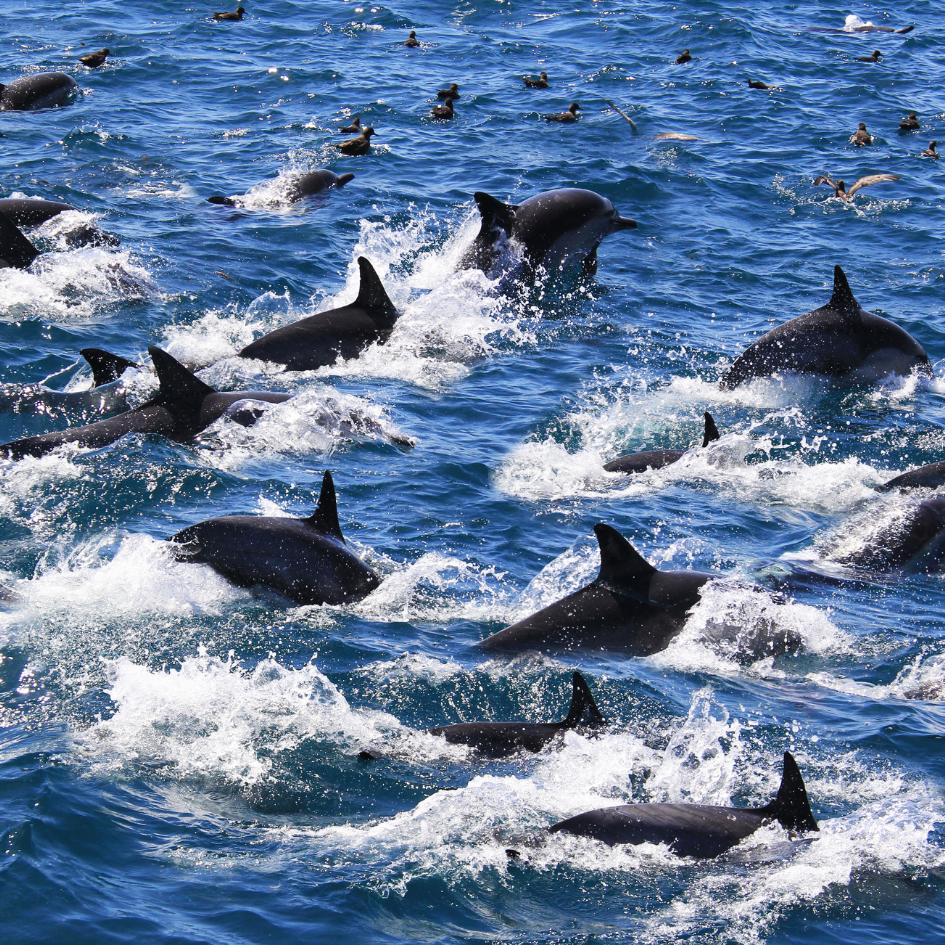
6. How do dolphins breathe?
Did you know dolphins are conscious breathers? They use a blowhole on top of their heads to inhale and exhale.
When they surface, they open the blowhole for a quick gulp of air and close it before diving again. Watch out for the spray or “spout” they make while exhaling!
Fascinatingly, when they sleep one half of their brain stays alert to make sure they come up for air.
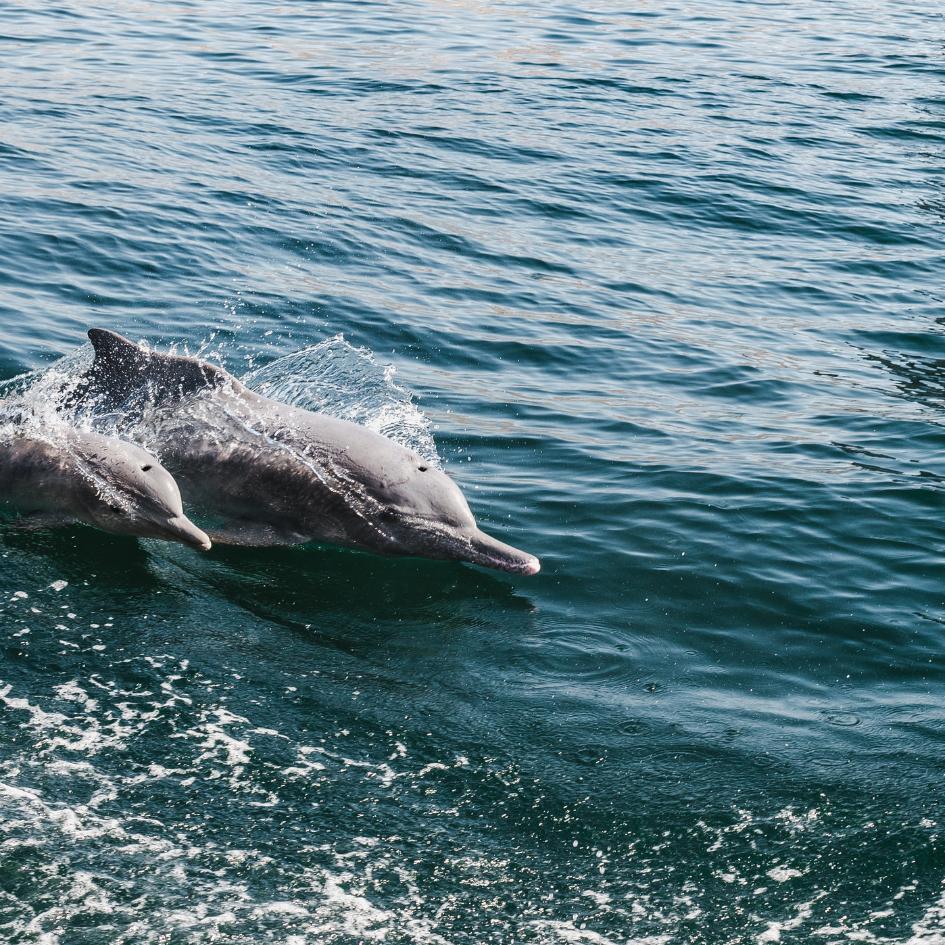
7. Why do dolphins blow bubbles?
Dolphins are quite the bubbly characters, literally! As air-breathing marine mammals, dolphins produce various types of bubbles for different reasons. They create bubble rings and streams, sometimes even while vocalising. But that’s not all—when they’re surprised, curious, or excited, they release what’s known as a ‘bubble burst’.
Unlike other mammals, dolphins have full voluntary control over their breathing, which is essential for their aquatic lifestyle. While making simple bubble rings might be straightforward, crafting stable rings shows that dolphins might possess a level of practice, expertise, and planning. [5]
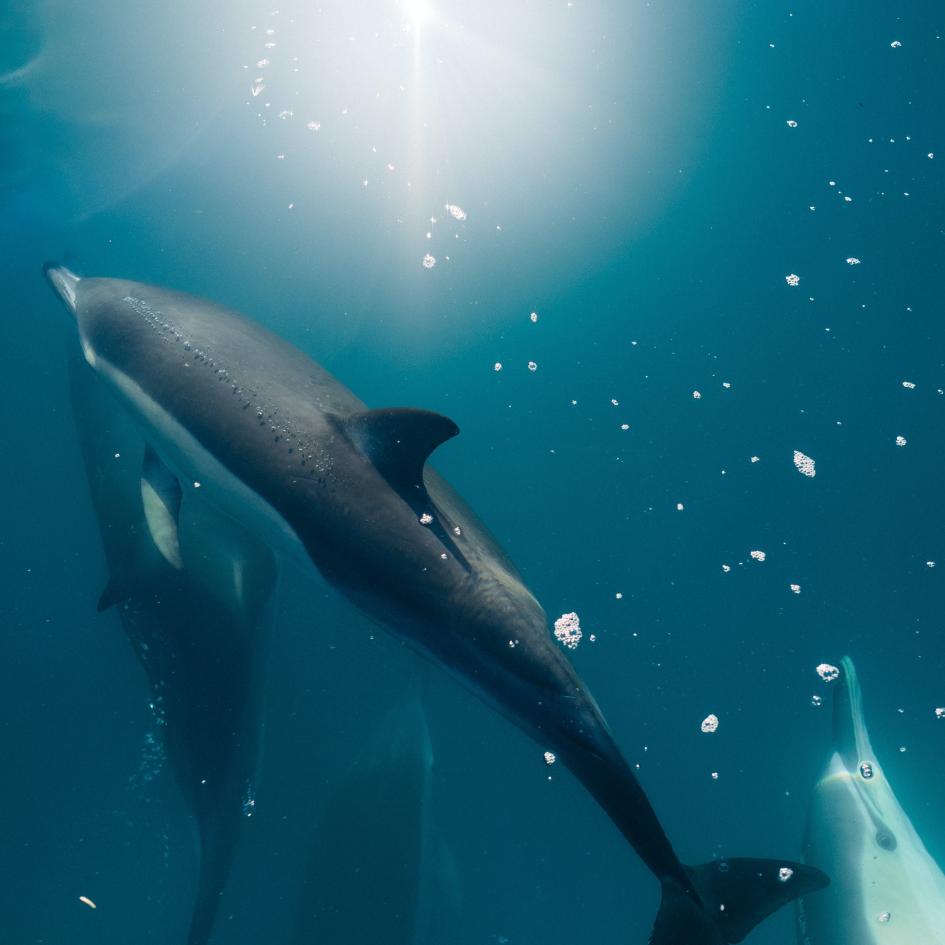
8. How smart are dolphins?
Dolphins have evolved to undertake complex problem solving and develop intricate social structures which increases their chance of survival.
Dolphins have the ability to learn during their lifetime as well as pass on knowledge to their offspring. Tool use is an example of intelligence which dolphins have developed. [6]
Scientists believe play is an expression of intelligence, and dolphins are champions at this.
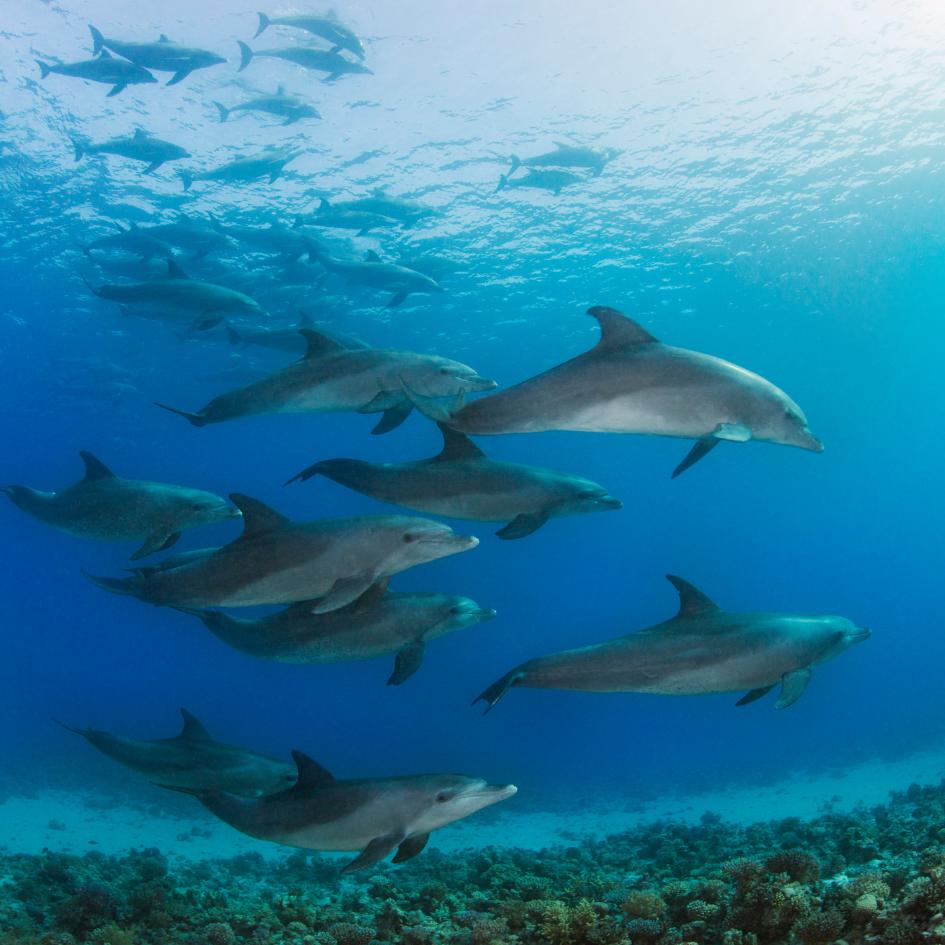
9. Why do dolphins play?
Play is a pivotal part of dolphins’ lives, serving multiple vital functions for both the individual and the group. It’s a training ground for calves, where they hone essential locomotor skills. These skills are not just for fun; they are crucial for foraging and mating strategies.
Social intelligence is another crucial aspect learned through play. Dolphins get to know their peers, gaining insights into their characteristics and tendencies. This social learning provides room for cognitive development and innovation. In fact, calves are the primary source of novel play behaviours, which sometimes get adopted by the entire group, enriching the social learning environment.
Moreover, the complexities in the patterns of play increase when peers are involved. This indicates that play has a layered role, contributing to the development of problem-solving skills, social and communicative competencies, and strengthening social bonds. [7]
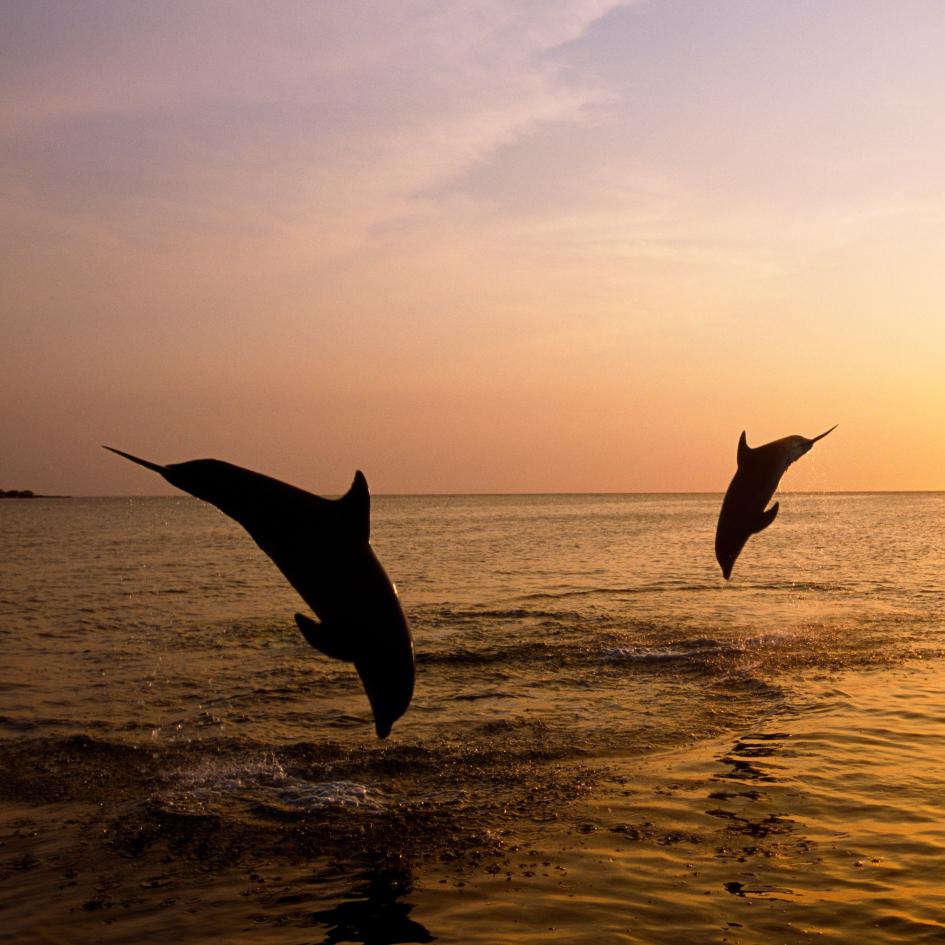
10. Are dolphins self aware?
Current scientific research suggests that dolphins are indeed among the few animals that display signs of self-awareness.
Dolphins demonstrate the ability to recognise themselves. They can examine body parts that are usually hidden from their view, such as the inside of their mouths, and move their bodies in unusual ways to observe their reflections in the mirror. [8]
Dolphins have been observed displaying emotions such as empathy and even grieving for lost companions, which could be considered a form of self-awareness.
This is a key reason why it is so cruel to keep dolphins in captivity at marine parks and zoos all over the world.
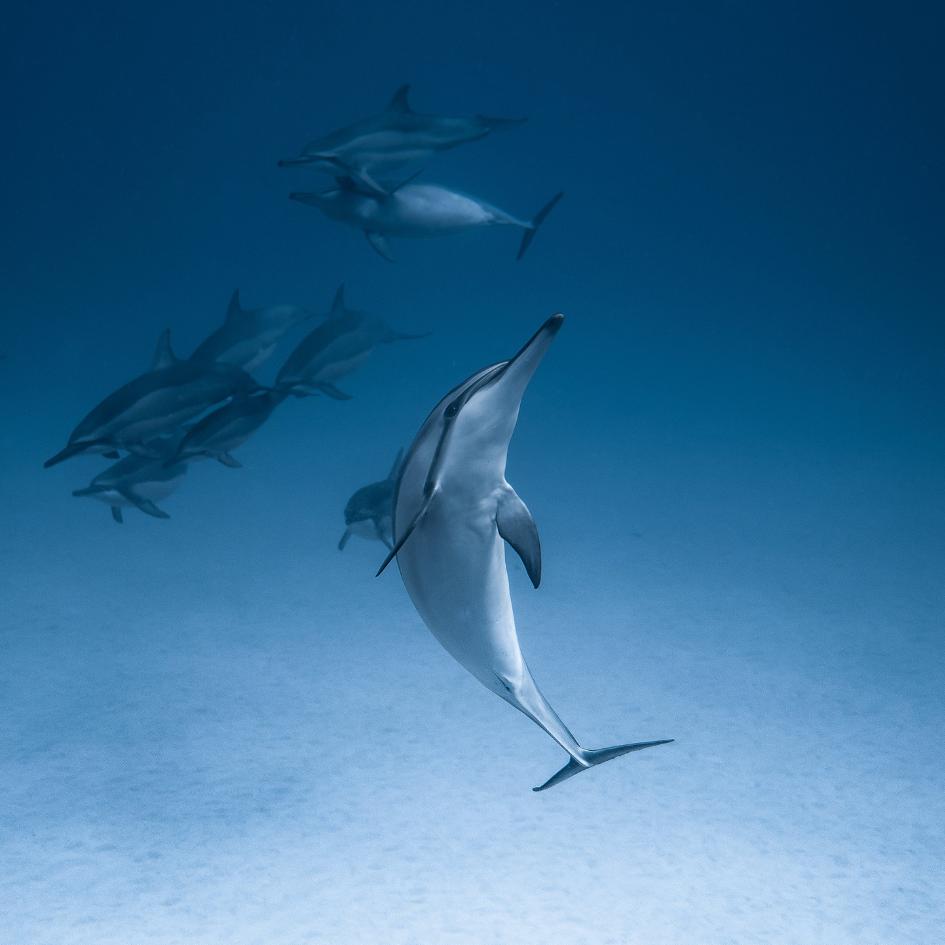
11. What do dolphins eat?
Dolphins are carnivores and have a range of food sources depending on where they live. They can feed on fish, octopus, squid, shrimp and crustaceans. The largest species in the dolphin family, the orca, can feed on larger prey such as birds, sea lions, and even other dolphins! [9]
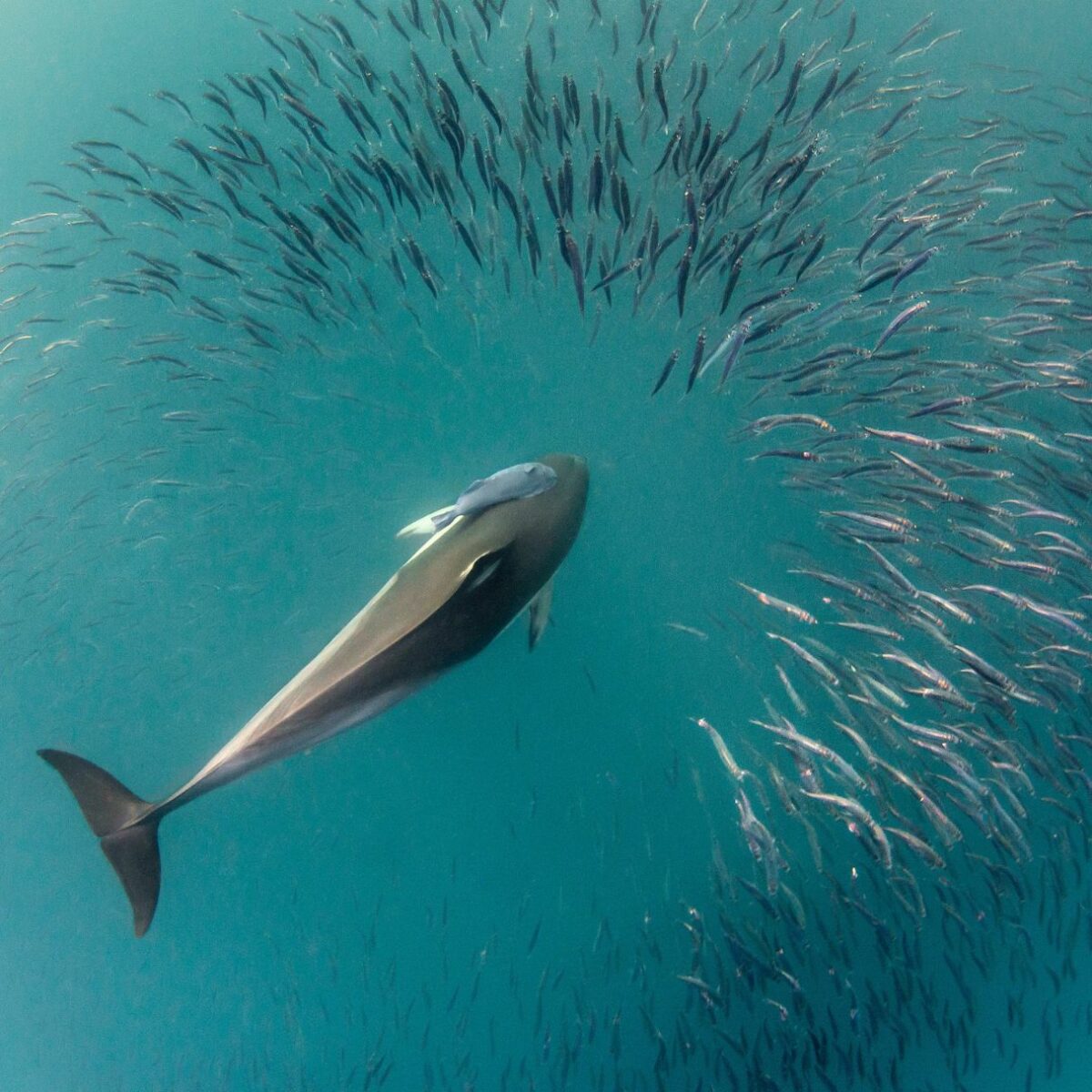
12. How do dolphins hunt?
Dolphins often hunt together in pods, where every dolphin has a specific role to play. They use their group advantage to surround fish, packing them closely together, before taking turns to feed. It’s like a well-planned soccer strategy, but in the ocean. [10]
Dolphins use a fascinating hunting technique called echolocation. They emit sound waves which bounce off their surroundings and allow them to locate prey. [11] Some dolphins like the Guiana dolphin can even pick up the electrical signals from fish, which is a next-level hunting technique. [12]
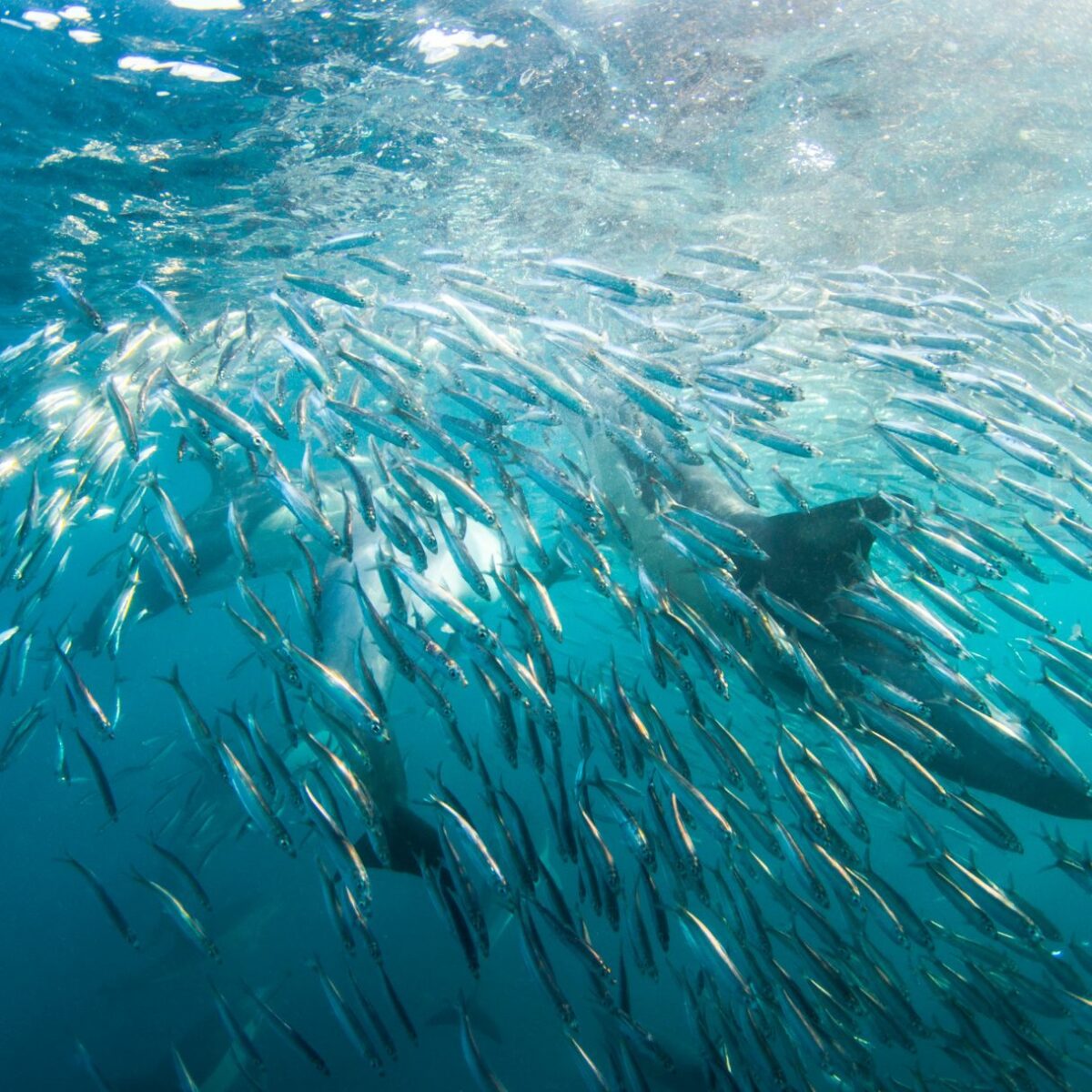
13. How do dolphins eat?
When it’s time to eat, dolphins don’t use their teeth to chew. They just grab their food, take a bite and swallow it whole. [13]
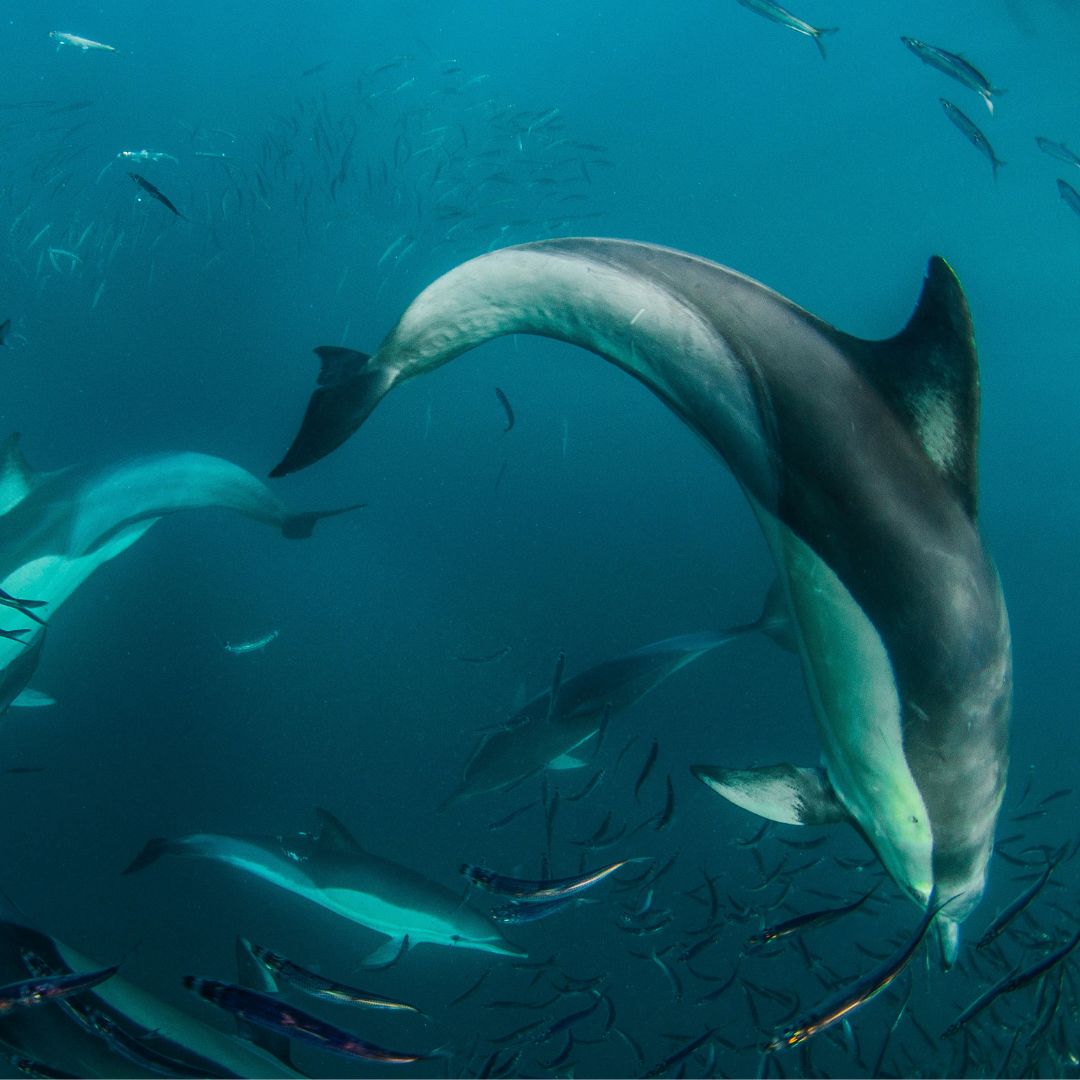
14. Do dolphins sleep?
Ever wonder if dolphins catch sleep like us humans? Well, they do, but it’s quite different from how we sleep.
Dolphins engage in “unihemispheric slow-wave sleep” where only one half of their brain sleeps at a time. This lets them come up for air, keep one eye open and stay alert for predators even while resting. They also alternate which side of their brain is asleep every couple of hours. [14]
How cool is that?
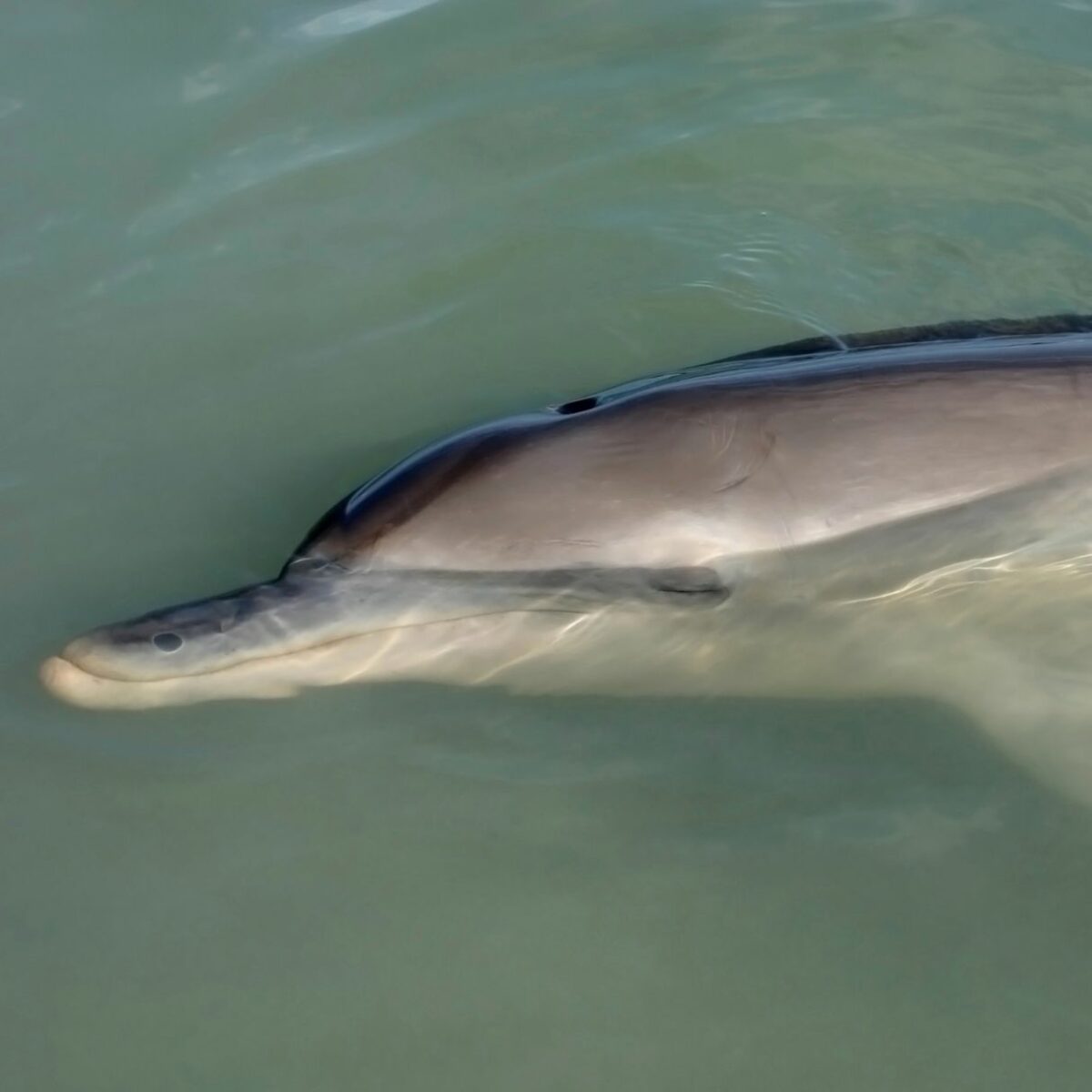
15. Why do dolphins live in pods?
Dolphins are socialites—they hang out in groups called ‘pods’.
Pods can range from a few individuals, up to hundreds of individuals. But it’s not just for fun; living in a pod has some serious perks.
First off, there’s safety in numbers. Predators like sharks think twice before messing with a whole pod of dolphins. Plus, they work together to hunt, making mealtime a group effort. And let’s not forget, pods are like dolphin schools where youngsters learn essential life skills. So you see, for dolphins, a pod is both a family and a survival squad!
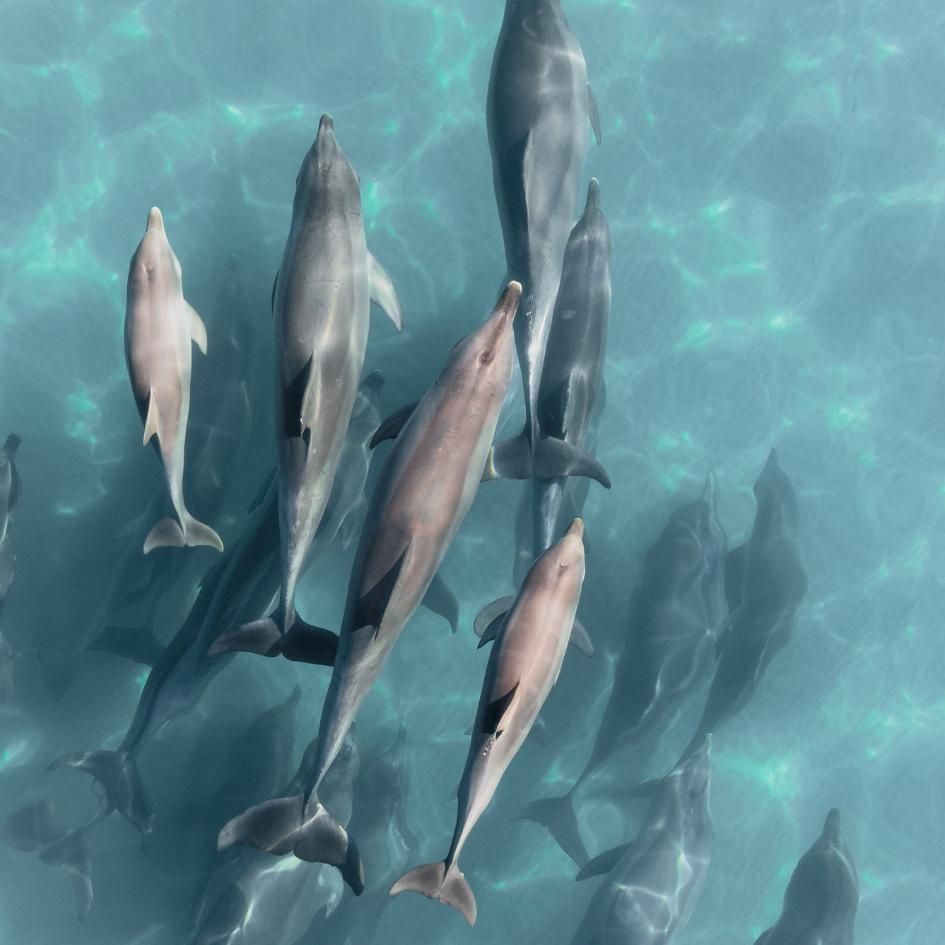
16. How do dolphins raise their young?
Dolphins have a truly awe-inspiring approach to parenthood. After a lengthy gestation period, a mother dolphin gives birth to a single calf, and within moments, something extraordinary happens: she nudges her newborn to the surface for its very first breath of life-giving air.
From that point on, the calf is dependent on their mum’s milk until the calf is able to catch fish. This can take between 6 months – 2 years.
There is a strong bond formed between calves and their mothers. Mothers invest a lot of energy into caring which includes teaching them effective communication, hunting, swimming and social skills.
The calf doesn’t just rely on its mum, though. In a remarkable display of community, ‘aunties’ within the dolphin pod often pitch in, helping to babysit and even nurse the young one. This incredible system ensures that the calf learns the vital skills for survival, from hunting techniques to the complex social interactions that define dolphin society. It’s an aquatic coming-of-age story that lasts for several years, underlining the deep familial bonds that are the cornerstone of dolphin life. [15]
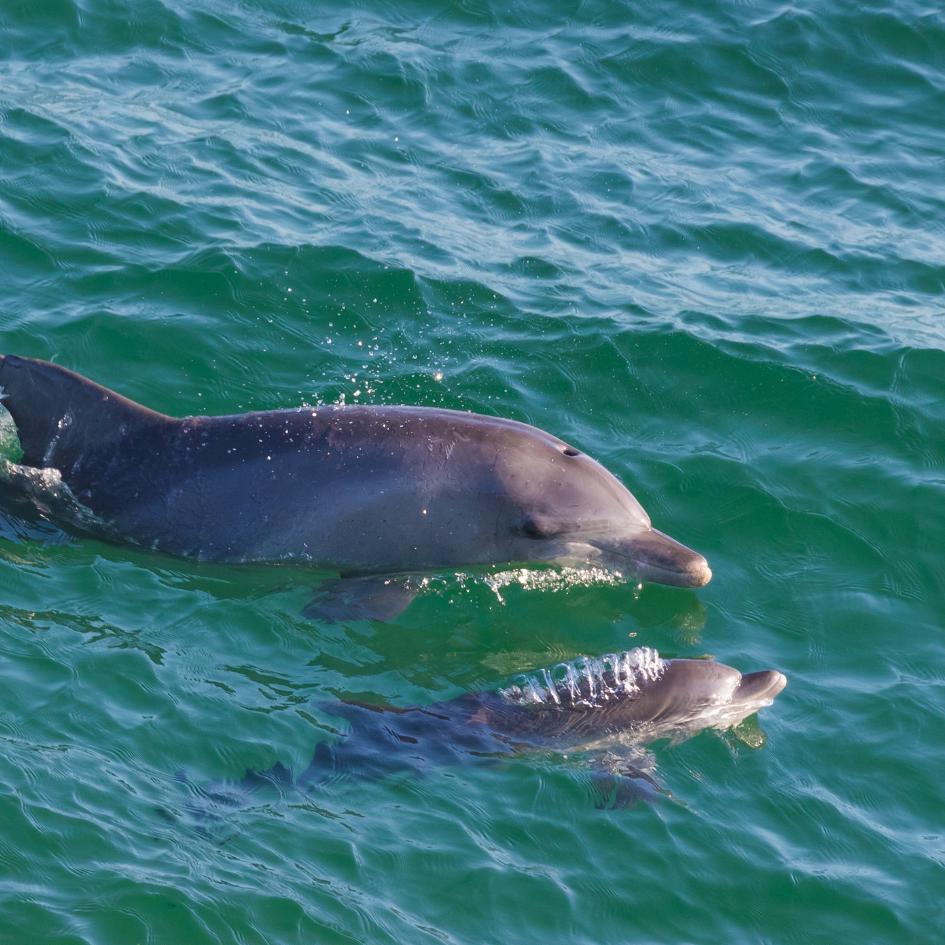
17. Are any dolphin species endangered?
Sadly, yes there are a few dolphin species that are at threat or in danger of extinction.
According to the International Union for Conservation for Nature (IUCN), 5 cetacean species and 19 subpopulations are critically endangered. These include the Vaquita, the Atlantic humpback dolphin, North Atlantic Right whale, and the Irrawaddy dolphin.
Furthermore, 12 cetacean species and 13 subpopulations are endangered. These include the Sei whale, blue whale, Indus River dolphins, Indian Ocean humpback dolphin and Hector’s dolphin. [16]
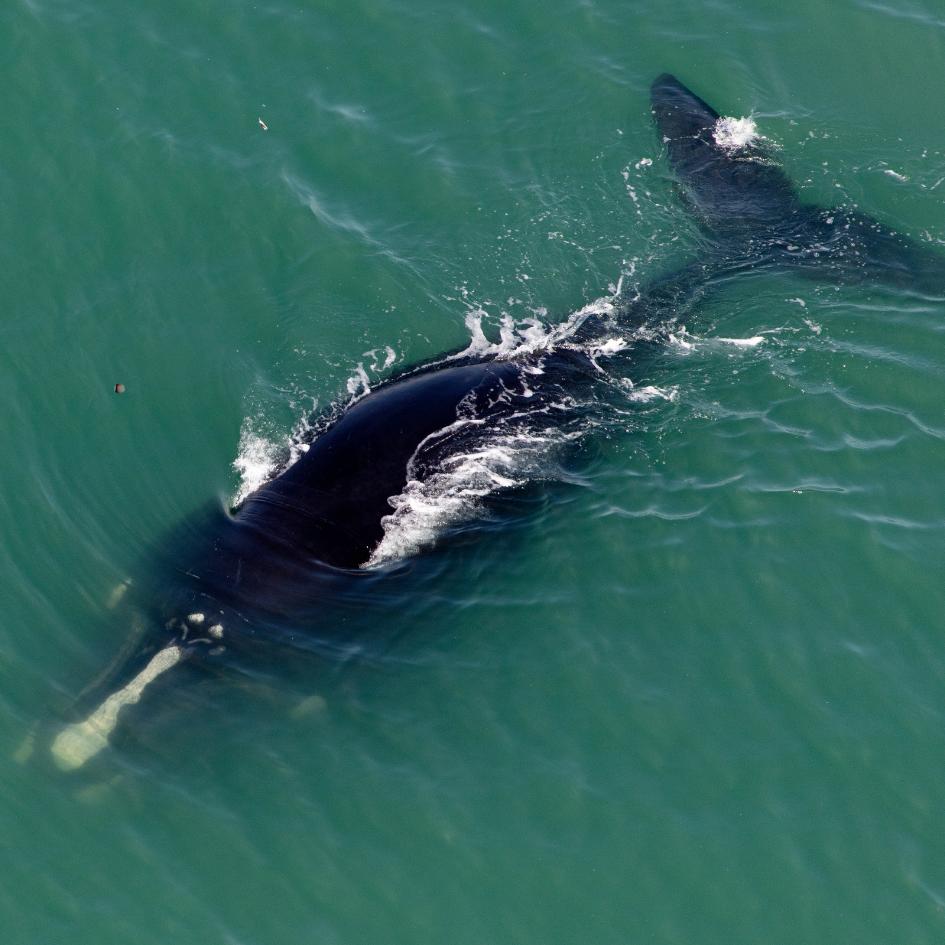
18. What are the biggest threats to dolphins?
Dolphins face a range of threats that mostly stem from human activities:
- Entanglement in fishing gear: Dolphins often get caught in fishing nets and gear, which can lead to injury or death.
- Ocean pollution: Pollutants such as plastics and heavy metals can adversely affect dolphin health.
- Habitat loss: Coastal development and human activities have led to a reduction in dolphin habitats.
- Climate change: Rising ocean temperatures and acidification can have long-term impacts on dolphin populations.
- Noise pollution: Noise from ships and industrial activities like seismic blasting for oil and gas exploration can interfere with dolphin communication and navigation.
- Dolphin hunting: Dolphin hunts like the hunts in Taiji, Japan, result in the capture or killing of hundreds of dolphins annually.
- Irresponsible tourism: Feeding dolphins or engaging in intrusive water activities can disrupt their natural behaviours.
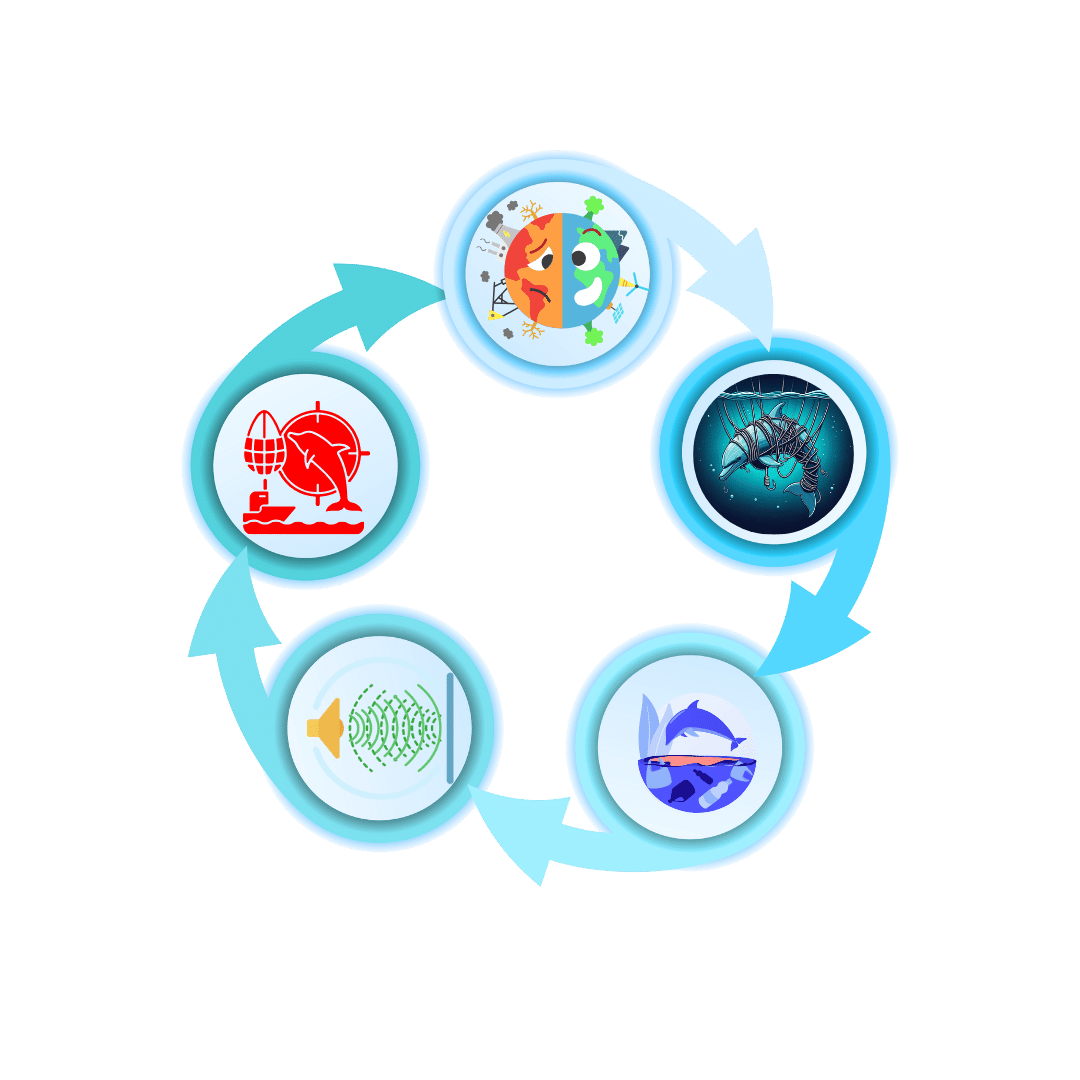
19. What is the largest dolphin?
Prepare to be amazed by this dolphin fact: the largest dolphin species is the orca! These awe-inspiring marine creatures are technically a part of the dolphin family. Adult male orcas can grow up to a staggering 9 metres /30 feet in length and weigh as much as 6,000 kilograms / 6 tons. Their sheer size is complemented by an equally impressive intelligence and intricate social structures.
Orcas are truly global citizens of the ocean! From the icy waters of the Arctic and Antarctic to temperate and even tropical seas, they’re found in a variety of marine environments around the world. They’re particularly abundant in the colder waters off of Norway, Alaska, Antarctica, and the Pacific Northwest of the United States.
These incredibly adaptable creatures have different ecotypes that specialise in particular kinds of food, which allows them to thrive in diverse habitats. Whether it’s the resident orcas of the Pacific Northwest feasting on salmon, or the transient orcas that roam more widely and eat marine mammals, these dolphins are wonderfully versatile. [17]
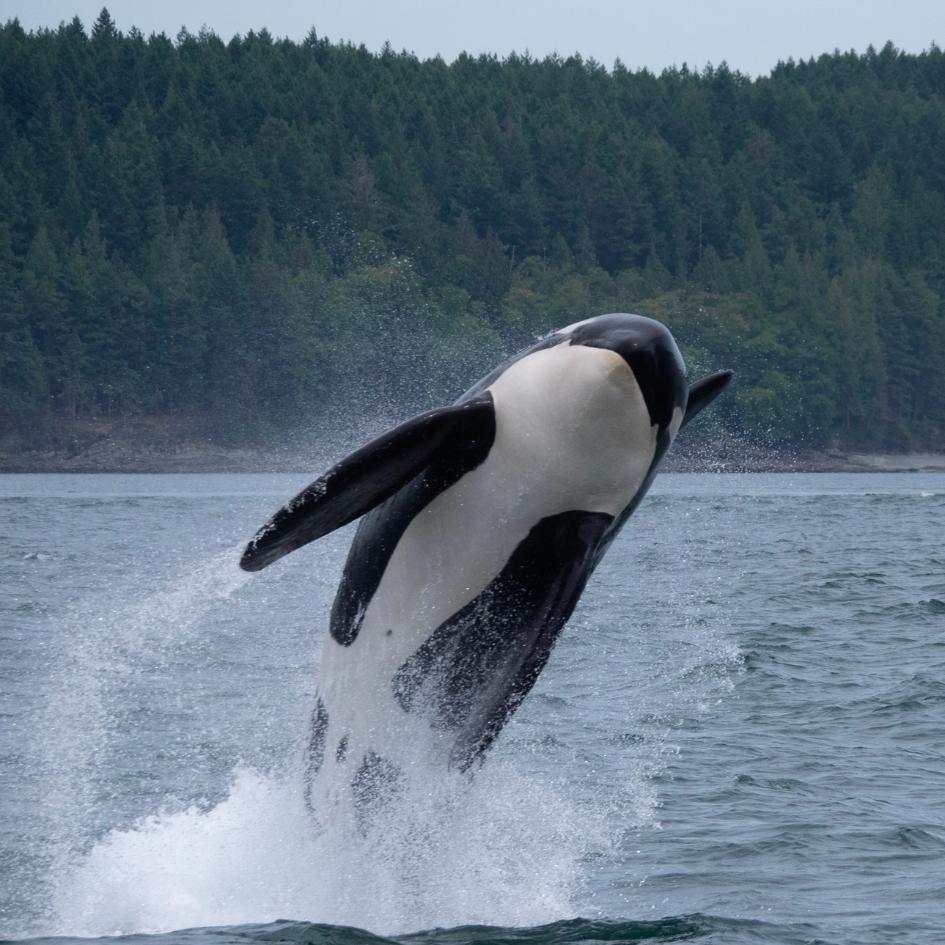
20. What is the smallest dolphin?
The Hector’s dolphin, a species native to the waters off New Zealand, is the smallest dolphin species. These petite marine marvels grow to a maximum length of about 1.4 metres / 4.6 feet and can weigh up to 60 kilograms / 132 pounds. But don’t let their size fool you; they’re full of energy and highly social creatures!
Hector’s dolphins are easily identifiable by their body shape, relatively large fluke, and distinctive grey, black and white colouring changes. They’re known for their playful nature and are often seen frolicking in the surf and performing acrobatics.
Even though they’re small, Hector’s dolphins play a big role in marine ecosystems. However, they are currently listed as endangered, primarily due to bycatch in fishing nets. So, these little dolphins are a big deal in terms of both marine biodiversity and conservation. [18]
